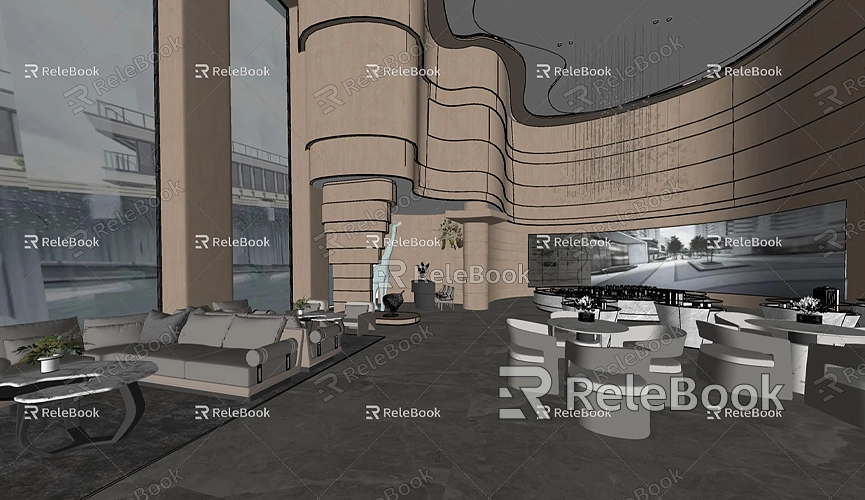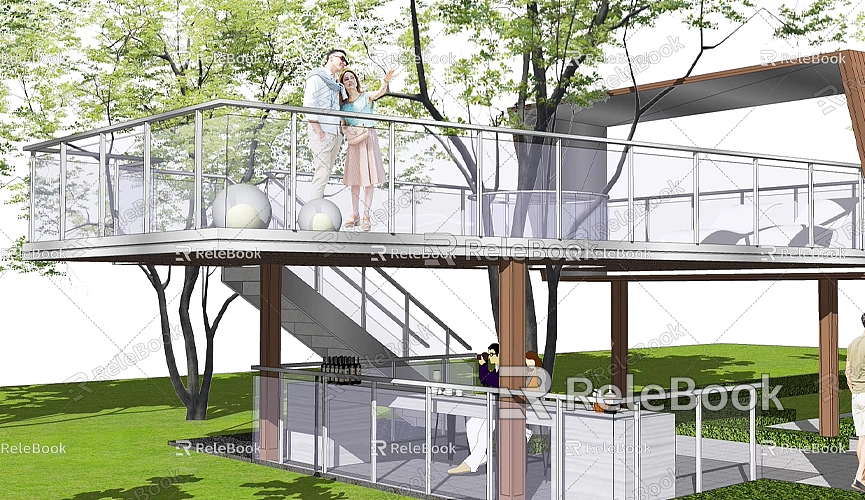How to Hide SketchUp Models in Revit Families' Extra Lines
In the fields of architecture and engineering, SketchUp and Revit are two of the most popular modeling tools. Many designers and architects use SketchUp to create initial models and then import them into Revit for more detailed design. However, imported SketchUp models often come with extra lines or geometries that can clutter the design and affect its overall clarity. Therefore, knowing how to effectively hide these unnecessary elements in Revit is an essential skill.
Preparation Before Importing
Before importing a SketchUp model into Revit, it’s crucial to clean up the model to reduce unnecessary complexity in Revit. For example, you can delete unnecessary geometries and elements, and hide unwanted layers. This preprocessing not only reduces the file size but also improves the performance and smoothness of operations in Revit.

In SketchUp, the Layers feature is helpful for managing different types of elements. You can place unnecessary elements on a specific layer and hide that layer before exporting the model. This reduces the clutter that will be imported into Revit, leaving a cleaner and more organized view in the Revit project.
Using Revit’s Visibility and Graphics Settings
In Revit, you can control what is visible in each view using the Visibility/Graphics settings. This feature provides a simple and intuitive interface that lets users selectively hide specific categories of elements. For example, after importing the SketchUp model, you can open the view properties, go to Visibility/Graphics, and choose to hide elements such as extra lines or unnecessary annotations from the imported model.
By adjusting these settings, users can quickly refine their views to make the model appear more professional. Additionally, you can save these settings to be easily applied to future projects, improving workflow efficiency.
Applying Filters
In addition to Visibility/Graphics settings, Revit offers a powerful Filter feature. By creating specific filtering conditions, users can manage which elements are displayed in a view. For instance, you can create a filter that only shows certain types of elements, helping you easily hide unwanted lines or geometries.
Setting up a filter is generally a straightforward process. You can go to the View tab, find the Filters option, create a new filter, and define which element types you want to hide. This flexibility allows you to quickly adjust your views based on project requirements.
Modifying the Imported Model
If the SketchUp model imported into Revit contains a lot of unnecessary lines, you can use the Model Browser to locate and select those lines, and delete them directly. While this process may take some time and patience, it ensures that your model is visually clean and organized.
When using the Model Browser, it’s a good idea to regularly check all imported elements to ensure no extra lines are left behind. By doing so, you can remove unnecessary elements while preserving the integrity of your model, improving the overall quality of the design.

Using the Crop Tool
The Crop Tool in Revit can also help hide unnecessary geometries. By creating a crop region, you can control the area shown in the view, effectively excluding extra lines and objects from the view. This not only improves the visual clarity but also helps designers focus on the parts of the design that need to be highlighted.
Using the crop tool is simple; you just need to define an area in the view, and Revit will automatically crop out anything outside of that region. This will hide unnecessary lines in the view, leaving the design clearer and more focused.
Tips for Effective Model Management
When working with Revit models, it's a good habit to regularly clean and check your models. This can significantly reduce model complexity and increase workflow efficiency. Additionally, using the layer management tools to group different types of elements helps in managing and hiding unwanted elements more easily.
Maintaining a clean design not only boosts individual efficiency but also creates a positive impression for team members and clients. By using the methods and techniques outlined above, you can effectively hide extra lines in Revit imported from SketchUp models, ensuring a professional and aesthetically pleasing design. We hope these suggestions help you work more smoothly during your design process and create higher-quality work.
If you're looking for high-quality 3D textures and HDRI to enhance your models and virtual scenes, you can download them for free from [Relebook's texture library](https://textures.relebook.com/). If you need beautiful 3D models, visit [Relebook's 3D Models site](https://3dmodels.relebook.com/) to access a wide range of premium 3D resources. These resources will help take your designs to the next level.

